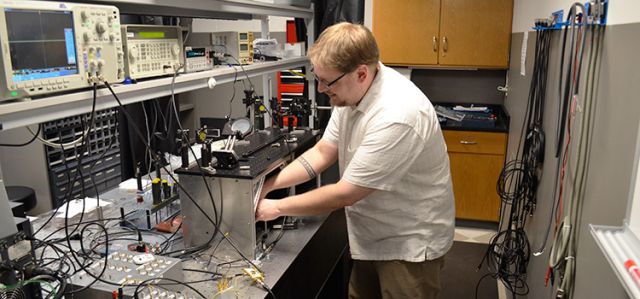Document Type
Article
Publication Date
12-1-2017
Publication Source
Advanced Optical Technologies
Abstract
In target-in-the-loop laser beam projection scenarios typical of remote sensing, directed energy, and adaptive optics applications, a transmitted laser beam propagates through an optically inhomogeneous medium toward a target, scatters off the target’s rough surface, and returns back to the transceiver plane. Coherent beam scattering off the randomly rough surface results in strong speckle modulation in the transceiver plane. This speckle modulation has been a long-standing challenge that limits performance of remote sensing, active imaging, and adaptive optics techniques. Using physics-based models of laser beam scattering off a randomly rough surface, we show that received speckle-field spatial and temporal characteristics can be used to evaluate the intensity distribution of the beam projected onto the target. We derive analytical expressions that directly couple the measured target-return wave statistical characteristics, or ‘speckle metrics’, with characteristics of the laser beam intensity distribution on the target surface. We also show how measured speckle metrics can be utilized for evaluation of laser beam quality at the target surface and for adaptive compensation of atmospheric turbulence-induced phase aberrations.
Inclusive pages
369–395
ISBN/ISSN
2192-8584
Document Version
Published Version
Copyright
Copyright © 2013, THOSS Media & De Gruyter Berlin Boston
Publisher
De Gruyter
Volume
2
Issue
5-6
Peer Reviewed
yes
eCommons Citation
Vorontsov, Mikhail, "Speckle Effects in Target-in-the-Loop Laser Beam Projection Systems" (2017). Electro-Optics and Photonics Faculty Publications. 88.
https://ecommons.udayton.edu/eop_fac_pub/88




Comments
The document available for download is provided in compliance with the publisher's policy on self-archiving. To read the version of record, use the DOI provided.
Permission documentation on file.